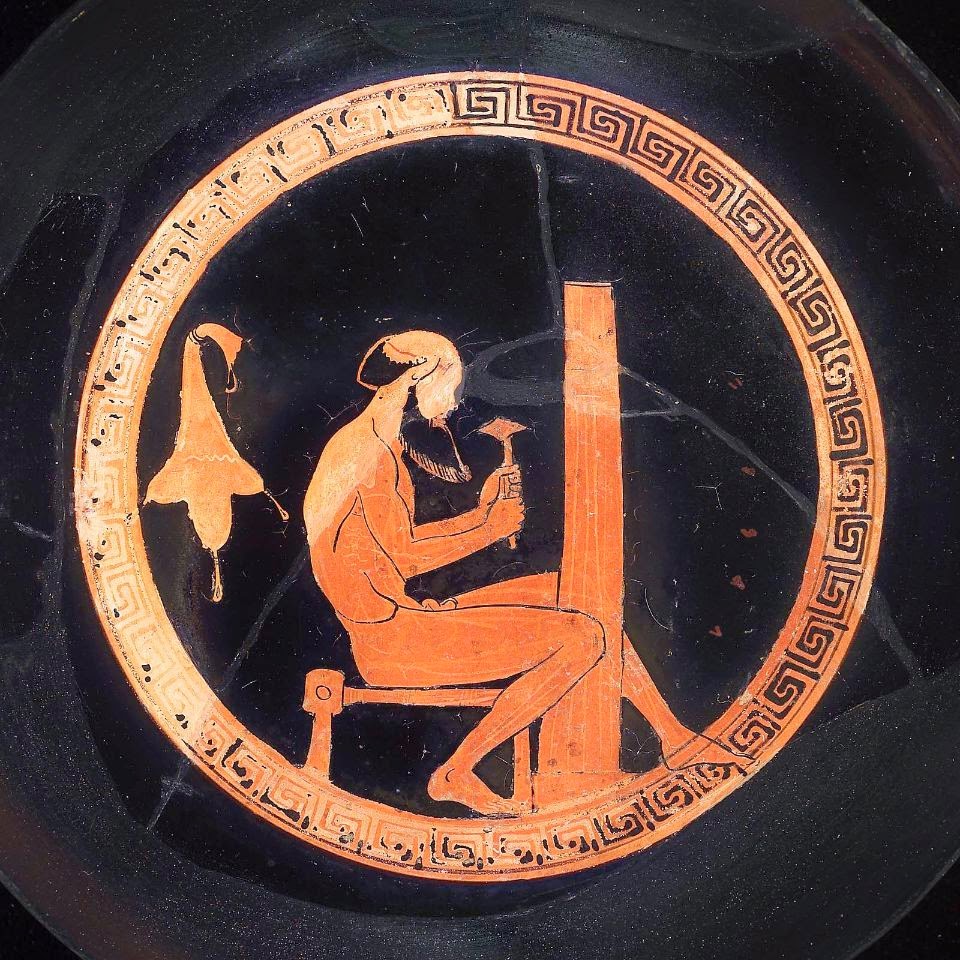It’s the passage where Aristotle tries to help us to understand the ways in which activities (energeiai) differ from changes (kinēseis) with an illustration from the business of temple building.
The principal point he wants to establish is:
1. Every kinēsis takes time, has a telos, and is complete only when that telos is achieved (1174a19–21).
The illustration here is the kinēsis: ‘housebuilding’. It is complete only when its telos, the building of a house, is reached.
The lines that I find puzzling come next1(174a21–3):
ἢ ἐν ἅπαντι δὴ τῷ χρόνῳ ἢ τούτῳ. ἐν δὲ τοῖς μέρεσι καὶ τῷ χρόνῳ πᾶσαι ἀτελεῖς, καὶ ἕτεραι τῷ εἴδει τῆς ὅλης καὶ ἀλλήλων.
Rowe’s translation: ‘So that will be either in the whole time, or in this. But if it is divided up into temporal parts, the resulting movements are all incomplete, and distinct in form both from the whole and from each other.’
I think that this is supposed to introduce a complication and provokes Aristotle to explain that 1. remains true even in these more complicated cases. The complicated cases have to do with being able to distinguish various parts (merē) of a kinēsis.
In these cases:
2. All these kinēseis that are parts of a kinēsis (a) are also incomplete in time (b) differ from one another in kind and (c) also differ (sc. in kind?) from the whole.
In the next chapter Aristotle will also have things to say about how energeiai differ from one another in kind. So 2b is not something true of kinēseis but not of energeiai. The most important point therefore seems to be 2a: dividing up a change into various parts is not going to prevent us from saying that all kinēseis are ateleis.
The illustration seems to work as follows. Unlike the simple case of housebuilding now we have a more complicated (and, I presume, more costly and important and laborious and ethically and politically significant) case of building a temple. Building a temple is a change and it has various parts and stages and it takes a period of time. Some of the stages have to be done before others but the temple as a whole is not complete until all of the stages are completed.
Here is a picture of some people building a temple who have already finished various bits of it. They have made the base of a column, for example, but they have not put on the roof:
Aristotle's illustration uses examples of some of the various different things that have to be done when you build a temple. It illustrates 1 and 2 in reverse order from the order in which they were introduced in a19–23).
3. Placing the stones together (hē tōn lithōn synthesis) is different from fluting a column [illustrates 2b] and both of these are distinct from the making of the temple [illustrates 2c]
Here is a picture of a satyr fluting a column:
4. The construction of the temple is complete (hē men tou naou [sc. poiēsis?] teleia) for it lacks nothing, while the making of the base or the triglyph is incomplete because each is a part.
This is then resumed at a27–9 where Aristotle says that he has shown that these changes differ in kind from one another and are complete, if at all, only in the whole.
In 4, presumably the idea is that making a base and making a triglyph are parts of making the temple and that is why they are incomplete unless and until the temple is complete.
Perhaps we should think that these parts are to be understood as parts of a temple in the sense that the triglyph on Pheidias’ workbench is not a completed triglyph even if there is no more carving to do because it can be a triglyph proper only once it is in its place in the fully constructed Parthenon. This, I suppose, is how he thinks he can maintain 2a: we can’t identify component kinēseis of a larger whole kinēsis such that those component kinēseis are complete even when the larger kinēsis is not.
If that is what he wants to show then I suppose I get his point. But then I have some questions and puzzles about why he is bothered about this and whether this is a good case for him to use to show why 1 still holds. Those are for next time, unless someone shows that what I have here is already confused.


2 comments:
Hello! Could you give me a reference for that vase-painting with the satyr? Thank you!
Dear galip,
I found it here:
http://educators.mfa.org/ancient/drinking-cup-kylix-satyr-fluting-column-64878
J
Post a Comment